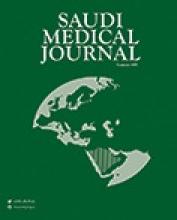Abstract
OBJECTIVE: To evaluate the response rate of various modalities of therapy in primary nocturnal enuretic children according to the ultrasound bladder volume and wall thickness index (BVWI) measurements.
METHODS: From February 2006 to November 2007, a total of 31 children, aged 6-12 years old were enrolled in a clinical trial. Based on BVWI they were divided into 3 groups as follows: Group 1 (BVWI <70%) was treated with oral desmopressin and oxybutynin; Group 2 (BVWI 70% to <130%) was treated with oral desmopressin. Group 3 (BVWI >130%) was treated with oral desmopressin accompanied by double-voiding technique and scheduled voiding. All of them were treated for 3 months.
RESULTS: Significant reductions in mean bed-wetting frequency before and after first treatment cycle were observed in all groups (p<0.05). The complete response rate was 70% in Group 1, 25% in Group 2, and 20% in Group 3. Overall, the complete and partial response rate was 9/10 (90%) children in Group 1, 13/16 (81%) in Group 2, and 3/5 (60%) in Group 3. Bedwetting frequency significantly decreased at the first and second treatment cycles in Group 2 (p<0.05) for each pair wise comparison.
CONCLUSION: The proposed treatment representation according to ultrasound BVWI measurements achieves favorable response rates in children with PNE. We suggest that this treatment should be used to develop the management of enuresis in children.
- Copyright: © Saudi Medical Journal
This is an open-access article distributed under the terms of the Creative Commons Attribution-Noncommercial-Share Alike 3.0 Unported, which permits unrestricted use, distribution, and reproduction in any medium, provided the original work is properly cited.






